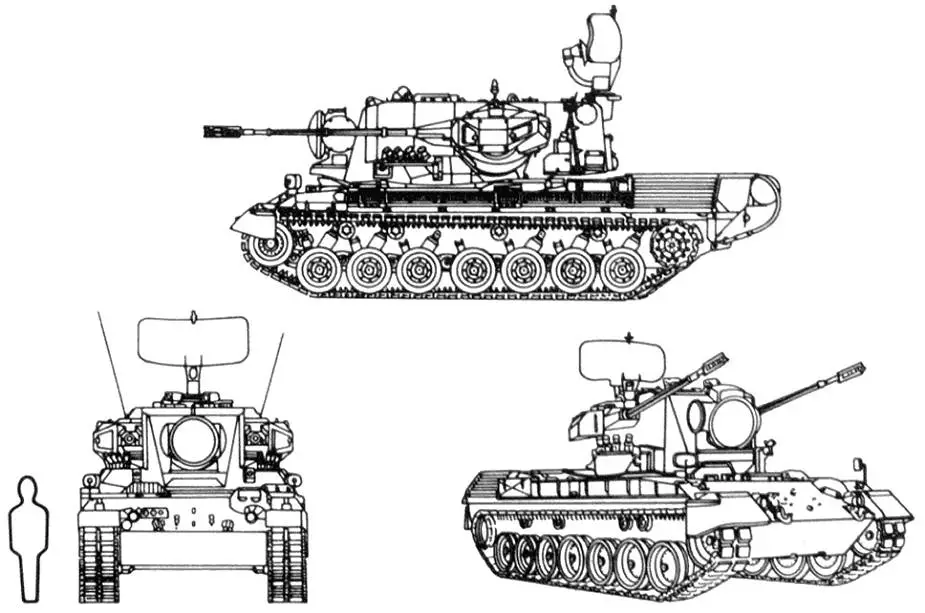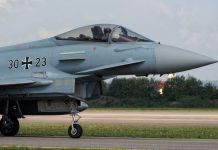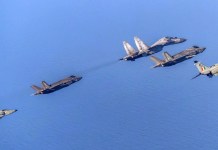The German-supplied Gepard self-propelled air defense systems have proven effective against Iranian-made Shahed-136 kamikaze drones, which have been wreaking havoc on Ukraine.
US-Supplied AGM-88 Air-Launched HARM Missile Goes Off Track; Strikes A Residential Building In Ukraine
‘Battlefield Horror’: UAV Captures 12 Minutes Of ‘Deadly Conflict’ Between Russian & Ukrainian Soldiers — Watch
Following Russia’s invasion of Ukraine, Berlin has positioned itself as an essential source of weapons for Ukraine. The IRIS-T air defense system, supplied by Germany, has already garnered attention for its successful use against Russian missile attacks.
??The German Gepard air defense system is the best of its kind#German #Ukraine️ #Gepard #UkraineRussiaWar pic.twitter.com/jPHIeF5P35
— Ukraine-Russia war (@UkraineRussia2) November 20, 2022
Early in November, the German government said it had given Ukraine 30 Dingo armored vehicles, missiles for IRIS-T air defense systems, four more anti-drone sensors and jammers, five M1070 Oshkosh semi-trailers, and one forklift.
The German government has also promised Ukraine 50 Gepards from the 1980s, which the German Army retired from service around 2010.
So far, it has shipped 30 Gepard anti-aircraft guns to Kyiv since the start of the full-fledged Russian invasion. The German embassy on Twitter confirmed this on November 19.
На захисті ?? неба: з початку повномасштабної війни #Німеччина поставила Україні 30 зенітних установок (САУ) #Gepard. Gepard став ефективною зброєю проти іранських безпілотників Shahed-136. Його використовують для захисту ?? критичної інфраструктури. #StandWithUkraine pic.twitter.com/yraxPV841H
— Посольство Німеччини (@GermanyinUA) November 19, 2022
“Protecting the Ukrainian sky: since the beginning of the full-scale war, Germany has provided Ukraine with 30 Gepard self-propelled air-defense guns. Gepard became an effective weapon against Iranian Shahed-136 drones. It is used to defend Ukraine’s critical infrastructure,” the embassy said.
In a similar line, the Gepard, also known as the Cheetah, was deemed “highly effective” by the RUSI report against the small, slow, and low-flying Shahed-136 drones that Russia has been employing quite frequently since mid-September.

In September, a video of a Gepard alongside an Osa in front-line brigade air-defense battalions appeared online. With radar and electro-optical guidance, the 18-ton wheeled Osa can launch missiles up to nine miles away and eight miles high.
The Gepard, equipped with its radar, can fire streams of 35-millimeter shells three miles away. Experts pointed out that the two vehicles can complement each other. The Osa can first neutralize airborne threats at a relatively long distance, and the Gepard can kill any lingering threats.
However, Germany is facing trouble procuring Gepard’s gun ammunition. The transfer of 35mm 35×228mm rounds for the Oerlikon GDF automatic guns, with which the Gepard self-propelled guns of the Ukrainian Army are outfitted, is being obstructed by Switzerland.
Gepard Self-Propelled Air Defense System
The Gepard is a self-propelled anti-aircraft weapon developed by the German business Krauss-Maffei Wegmann (KMW). The Gepard’s development began in the 1960s and entered service in the 1970s.
The anti-aircraft vehicle has undergone multiple electronic upgrades. The Leopard 1 Main Battle Tank (MBT) tracked chassis is the foundation for the Gepard, which also features a two-man turret with two 35mm Oerlikon Contraves KDA guns.
The German Army received a total of 420 systems. In addition, the Gepard was shipped to Belgium and the Netherlands. Brazil, Chile, Jordan, Romania, and Qatar are among the countries that still use self-propelled anti-aircraft guns.
Late in 1998, the German Ministry of Defense announced that it would transfer 43 Gepards, as well as maintenance and training equipment, to the Romanian Army. In 1999, the German Army shipped the first systems to Romania.

An export permit for a total of 15 Gepard anti-aircraft tanks to Qatar was said to have been granted in December 2020. In addition, 45 breechblocks, 30 tubes, 16,000 rounds of ammunition, and four automated cannons were also sent as spare components.
The Gepard has separate search and tracking radars, with the search radar mounted at the front rear of the turret and the tracking radar mounted at the rear front of the turret. The radars offer 360-degree scanning while simultaneously monitoring targets, suppressing clutter, enabling search while moving, and operating in monopulse tracking mode.
The Gepard is mounted with twin Oerlikon KDA 35mm guns in a two-man electric power-controlled turret. The weapons are equipped with an automatic belt feed. The length of the barrel is 90 calibers (3,150mm).
The two barrels fire at a rate of 1,100 rounds per minute. Each 35mm cannon comes with 320 rounds of anti-air ammunition and 20 rounds of anti-ground target ammunition. The guns can use various standardized 35mm ammunition, including the new frangible armor-piercing discarding-sabot ammunition (FAPDS) rounds.
The FAPDS rounds have a muzzle velocity of more than 1,400 meters per second. The Gepard has eight smoke dischargers mounted on either side of the turret. KMW used the Stinger surface-to-air missile system to build a missile system for the Gepard.
The dual Stinger launching mechanism was installed on a 35mm twin gun piece. However, the system was tested but was not deployed due to budgetary restrictions.
- Contact the author at ashishmichel(at)gmail.com
- Follow EurAsian Times on Google News




